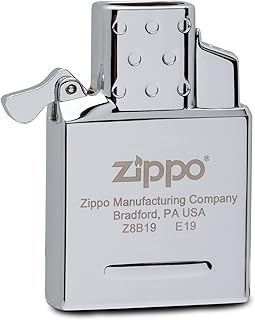The History of Zippo Lighters: From Humble Beginnings to Global Icon
The story of the Zippo lighter is a testament to the power of innovation, marketing, and a little bit of luck. From its humble beginnings in a Pennsylvania factory, it has become a global icon, synonymous with ruggedness, reliability, and American culture.
Humble Beginnings:
* 1932: George G. Blaisdell, a young entrepreneur, was inspired by the Austrian "Kreiss" lighter, a windproof lighter he encountered on a trip to New York. Dissatisfied with the Kreiss's design, Blaisdell set out to create a better lighter.
* 1932: The first Zippo lighter was born, named after the "Zipper" brand of his company. It was initially marketed as the "Zippo Windproof Lighter," boasting its ability to work in any weather.
* 1933: Blaisdell filed for a patent for his invention. The original Zippo, with its distinctive rectangular design and hinged lid, was marketed as a "pocket lighter" and quickly gained popularity for its durability and ease of use.
World War II and Beyond:
* 1941: With the outbreak of World War II, the demand for Zippo lighters skyrocketed. The company's production shifted to prioritize the needs of the military, supplying soldiers with lighters for warmth and signaling.
* 1941-1945: The Zippo became an indispensable tool for soldiers, earning a reputation for resilience and reliability under combat conditions. Its popularity soared, solidifying its association with American patriotism and the war effort.
* Post-War Era: The Zippo returned to civilian production, leveraging its wartime success and establishing a strong brand identity.
Innovation and Branding:
* 1950s-1960s: Zippo continued to innovate, introducing new finishes, materials, and designs, including the iconic "flame" logo. This era also saw the rise of the Zippo lighter as a collectible, with special editions and limited releases appealing to enthusiasts.
* 1970s-1980s: The company embraced marketing campaigns, featuring rugged individuals and outdoor activities, further solidifying its image as a symbol of adventure and freedom.
* 1990s-Present: Zippo diversified its product line, introducing lighter fluid, accessories, and even apparel. It continued to expand its global presence, establishing itself as a recognizable brand across continents.
The Legacy of Zippo:
Today, the Zippo lighter remains a global icon, admired for its quality, reliability, and timeless design. It has become a symbol of American ingenuity and a prized possession for collectors and enthusiasts worldwide.
Key Factors Contributing to Zippo's Success:
* Durable Construction: The Zippo lighter's simple, yet robust design, with its windproof mechanism and replaceable flint and wick, has ensured its long-lasting functionality.
* Iconic Branding: The distinctive rectangular shape, hinged lid, and distinctive "click" sound have become synonymous with the Zippo brand.
* Marketing and Association: From its war-time association with American patriotism to its association with outdoor activities and freedom, Zippo has skillfully leveraged marketing and brand storytelling.
* Collectibility: The company's introduction of special editions, limited releases, and personalized designs has cultivated a thriving community of collectors, further strengthening its brand identity.
The story of the Zippo lighter is a compelling reminder of the power of innovation, marketing, and a dedication to quality. It has transcended its status as a simple lighter, becoming a symbol of ruggedness, resilience, and the enduring appeal of American culture.


